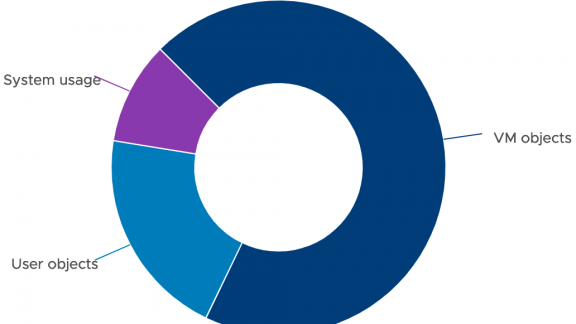Guest author Hareesh K G wrote this article. He is a Senior Technical Support Engineer (TSE) at VMware Global Support Services (GSS). As such Hareesh spends much of his time with real-world customer environments. Thank you, Hareesh, for sharing your time and expertise regarding the new capacity reporting features in vSAN 7.
A simplified view of storage capacity is a vital part of data center management. VMware Cloud Foundation, vSphere, and vSAN administrators should always remain aware of capacity management and reporting to ensure that the storage space consumption is controlled, calculated, and managed optimally. A clear capacity view with accurate reporting helps administrators make decisions to add capacity to existing hosts in a vSAN cluster (scale-up). Admins might have to add hosts to a vSAN cluster (scale-out) and revisit the storage policies assigned to the VM objects. Changes to storage policies can also impact capacity usage. In any case, accurate reporting is essential to ensure an organization continues to run without disruption.
vSAN 7 brings two enhancements to capacity montioring: Improvements to virtual machine consumption metrics and vSphere Replication object reporting.
Improvements to Virtual Machine Capacity Consumption Reporting
Capacity reporting plays a vital role in everyday operations to accurately determine current utilization and predict capacity growth based on the current trends. Administrators need to ensure adequate free space is always maintained in any storage array or HCI solution. vSAN requires free space or "slack space" to handle transient operations such as snapshots, policy changes, host maintenance. Running out of free space can cause significant issues for any storage platform. vSAN 7 includes new enhancements to help avoid these issues.
For starters, changes were made to the method used for polling storage consumption on a vSAN datastore. vSAN 7 considers raw space consumed by the namespace folder, VM home, which includes configuration files, log files, etc. The VM home folder coexists with other objects that belong to a VM such as a virtual disks (.vmdk), snapshots, and swap files (.vswp). Virtual machine swap files enable hosts to greatly reduce the amount of overhead memory reserved for the VMX process. The size of a virtual machine swap file is usually the same size as the amount of memory configured for the virtual machine. For example, a virtual machine configured with 4GB of memory would have a 4GB swap file when it is powered on. As you can imagine, the swap files for many powered on virtual machines can consume a significiant amount of storage. The good news is objects on a vSAN datastore are thin-provisioned. vSAN provides more accurate reporting of the actual capacity consumed by these thin-provisioned objects. Figure 1 below shows a virtual machine configured with 6GB of memory. The actual amount of capacity consumed by the virtual machine including the swap object is only 2GB.

Figure 1. Improved Virtual Machine Capacity Consumption Reporting
It is good to note that an upgrade from a previous version of vSphere and vSAN to version 7 will show this difference in the vSphere Client including the space consumed by the VM home folder and the actual capacity used by the swap file. See Revisiting vSAN’s Free Capacity Recommendations for guidance on capacity planning and management in a vSAN environment.
vSphere Replication Objects in the vSAN Capacity View
The vSAN 7 capacity view now shows how much space is consumed by vSphere Replication objects. Space reporting for these objects is shown is a dedicated section under "User Objects." This provides a more granular report of space consumed by replicated data on a vSAN datastore, as shown in Figure 2.

Figure 2. vSphere Replication Objects in the vSAN Capacity View
This helps administrators manage storage capacity and better understand how much space is consumed by replicated data. It is important ot note that you can select a storage policy for the replicated data when configuring replication. You might wish to use a storage policy with RAID-5 erasure coding for replicated data to minimize space consumption on the target datastore even though RAID-1 mirroring is used at the source. Storage policies are configured on a per-VM basis to enable precise management of resilience and capacity consumption.
Summary
vSAN 7 capacity view enhancements provide improved reporting for virtual machine objects. vSphere Replication object capacity usage now has a dedicated section in the UI. You can use these improvements to more accurately account for current capacity conditions and growth forecasting. VMware vRealize solutions and third-party tools can also use APIs to poll this information. Accurate capacity reporting helps streamline operations and reduce risk. This latest release of vSAN provides common management and operations tools needed to maintain HCI environments on-premises and in the cloud.




